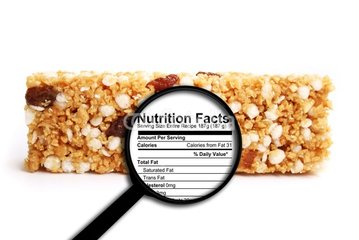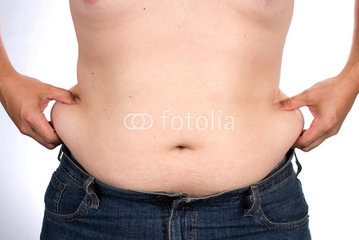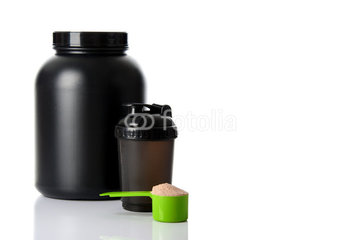Reductionist theories in the world of fitness are nothing new.
Pay close attention and you will notice they pop up with alarming frequency.
The titles of such articles (and advertisements) are obnoxiously in your face, and extremely commonplace.
“The Top 10 Fat-Causing Meals At Fast Food Restaurants.”
“Drinking soda increases belly fat by 53%.”
“Fruit contains fructose, which will cause you to gain weight.”
“Eating carbs after 7 pm shuttles them directly to your thighs.”
Reductionist propaganda has been around for years. In a world full of variables, it makes us uncomfortable to reflect and search for self-improvement. When we look very closely at the decisions we make, we might not like what we see.
The health and fitness industry understands this fully. It’s an industry which has made a killing on the ignorance of the general public. To profit, the fitness industry wants us to view the world as black and white, with nothing but absolute “right” and “wrong” things to do. And you are in control of sifting through all of the options and deciding which options to “toggle”. Toggle enough of them in the correct combination? Your belly fat will begin to fly off of you. Toggle the incorrect combination? You’re doomed to rock that muffin-top, and there’s nothing you can do about it.
Although this behavior is irresponsible, the reasoning behind it is completely understandable. Which article title sounds better to you?
“Hundreds, If Not Thousands Of Tiny Decisions Make Up Your Overall Habits, Which Determine Your Health and Waistline”
OR
“5 Foods To Eliminate To Get A 6-Pack”
We all would chose option number two. Attributing your belly fat to 5 foods makes us feel like we are in control. All we must do is eliminate those foods. Within mere months, we will look like Channing Tatum. Women will salivate over us, begging at the chance to experience “Magic Mike”.
None of these “click bait” articles compare, however, to the biggest reductionist fallacy in nutrition today. People everywhere who diligently count calories and macros, and have nothing to show for it, become red-faced with frustration and desperation when the biggest nutritional over-simplification comes spewing out of some “guru’s” mouth:
“Calories In, Calories Out is all that matters.”
Or perhaps this statement’s cousin………
“If you want to lose fat, you just need to eat less.”
Everyone over the age of 16 knows exactly what to do when the “low fuel” indicator comes on in your automobile. We hear that familiar “ding, ding, ding”, and we immediately check our gauges to find out how many miles we have left. We consult our GPS for the nearest available gas station. We find one, pull off the highway, arrive at the pump, and fill up our tanks.
When gas enters the tank of our car, we know what it does. The car’s combustion engine will turn the potential energy contained within the gasoline into kinetic energy, moving the pistons and eventually causing the wheels to spin . Assuming you continue to fill the car’s tank with gasoline, your car will continue to provide you with adequate transportation.
We also know what will happen when we forget to fill up the tank, or are too distracted to hear the “ding, ding, ding”. We will be stuck on the side of the road, hoofing it with our empty gas can to the closest fill-up spot.
Topping off the gas tank results in issues as well. One, quick top-off will likely be okay, but anything over that causes gas to spill out all over our shoes. And nobody likes the smell of ethanol on their Nikes.
Dr. Susan Kleiner, owner of High Performance Nutrition, LLC, is the author of eight books on the topic of sports nutrition and proper fueling for athletic performance. She consults regularly with professional athletes and has worked with professional teams across many different sports.
Considering her extensive experience helping athletes perform at their highest level, Susan had this to say about the topic at hand:
Our bodies are very different from a car. A car has a static response to the environment. We have a dynamic response to the external and internal environment. As fuel is less available, or external issues cause an increased stress response (ongoing fight or flight response) we conserve fuel by restricting its availability. We appear to do the same activity and use less fuel, leading to minimal weight loss despite significant calorie restriction. In fact, if you measure work (or watt) output, it is lower than when you are well-fueled. Thus the saying: eat more, (train harder), weigh less. And the concept that CICO doesn’t always rule, is demonstrated.
Advocates of calories in, calories out (CICO) will tell us total energy is all that matters – quantity trumps quality. They claim food enters our mouth, moves down our esophagus into our stomachs, and is utilized by our body as “energy”. This “energy” accumulates and is used by our bodies in various processes. Altogether, these processes determine our “TDEE” – total daily energy expenditure.
If we want to lose fat, all we must do is eat less calories than our “TDEE” – and our bodies will obtain any additional energy it needs in the form of fat deposits on the body.
A “calorie” is a scientific term which measures the energy content of food. A calorie is the amount of energy which is required to cause 1 gram of water to rise in temperature 1 degree centigrade. This has been studied and documented and is accepted as a scientific fact.
But using this definition as a proof of CICO being the only possible equation with reference to our body’s fat stores is a drastic oversimplification. The human body is a complex system – a system we do not understand fully. There are theories, yes, but until we have the technology to analyze millions (billions?) of processes simultaneously, we have to be aware that there are more variables at play than the simple calorie.
Consider all the various functions of energy (calories) inside the human body. If a calorie is consumed, it can:
- Be used as short-term fuel.
- Be used for repairing tissues or for replacing cellular glycogen after training.
- Be used in the body’s digestive system as enzymes.
- Be excreted as waste.
- Be transformed into fat tissues.
Even listing these five different uses is a simplification. The actual list of uses for energy is too long to list here. Either way, it’s safe to say we have no clue what actually does happen to the energy content of that tablespoon of peanut butter after we consume it.
Any culinary item with calories must consist of one of three macronutrients: protein, carbohydrates, or fat. A brief primer on each:
Protein
Protein has 4 calories per gram. There are many benefits to eating a diet high in protein. Often seen as the “bodybuilding” macronutrient, consuming protein around your training sessions helps to maintain and/or build lean body mass.
Protein also has a very high “TEF” – thermal effect of food. This means protein requires energy just to digest it properly. For every 4 protein calories consumed, the body uses around 1 calorie in the digestion process. Combine this with the fact that protein is very filling, and you have an ally in fighting the battle of the bulge.
Carbohydrates
Carbohydrates have 4 calories per gram. Although carbohydrates have been demonized in the media, there is nothing inherently wrong with eating carbohydrates; eating carbohydrates does not directly cause fat gain.
However, since carbohydrates provide “quick fuel” to the body, the optimal amount of carbohydrates varies greatly based on your activity level. A high-performing, relatively lean, athletic person requires a much higher carbohydrate consumption than a sedentary 55-year old.
Carbohydrates are also very prevalent in processed food. If you eat a steady diet of processed food, odds are good that carbohydrates will make up a majority of your calories. Combine that with the fact that carbs are the least filling macronutrient and you have a one-two punch that gets many into trouble without even realizing they are harming themselves.
Fat
Fat has 9 calories per gram. Due to fat’s high caloric content, it was avoided in the late-80’s through the mid-90’s. If fat contains lots of calories, it must be causing fat gain by default. Or so the logic went.
Recently, the pendulum has swung in the other direction. Fat has been embraced as a part of a healthy diet. Saturated fat, when eaten in moderation, has been shown to improve testosterone levels in men. Fat is delicious, filling, and slows digestion as well.
Each of these macronutrients have their place in the American diet. The biggest issue with how most Americans eat has less to do with their instantaneous choices and more to do with their overall lifestyle. The easiest and simplest template to lose fat in America? Having a standard meal frequency and being sure every meal is “mixed” – and contains a healthy dose of protein, carbohydrates, and fat. Make sure most of your food choices come from animals and nature (ie – “whole foods”) and you would be hard pressed to not improve your health over time.
The problem with this lies in what it means to the individual. We are all stressed and pressed for time. And the thought of having to create 3 square meals of healthy whole foods every day is enough to cause anyone to dread the daily chore of meal prep.
So, what do we do? Turn to conveniences which make our lives easier. The carryout boxes, the fast food joints, and the pizza delivery options. Which would you prefer? A two minute phone call or an hour of mixing dough to prep a homemade pizza? Domino’s, here we come.
If macronutrients each have specific advantages, how can we reduce the entirety of our body composition to a simplistic “CICO” equation? If “a calorie is a calorie”, and overall calories are all that matters, all one must do is eat less calories to lose fat. And if fat isn’t being lost, well, then it’s time to just reduce those calories, right? Because fat has to be lost eventually. Just keep manipulating the equation. You should eat less and less and less.
If only it were that simple.
Anecdotal Evidence
The term “bro-science” gets tossed around quite frequently with a negative connotation attached to it. “Bro-science” refers to anything which has not been quantified by a double blind placebo trial, but is widely accepted as the truth.
The history of the term “bro-science” comes from the practice of finding the most yoked “bro” at the gym and asking them what they did to look so muscular. Often times, the “bro” would spout off nonsense which likely did little or nothing (“nothing but tilapia and broccoli, bruh!”). In reality, fantastic genetics or (gasp!) pharmaceutical assistance probably had a bigger impact on their body composition.
However, completely dismissing items as being false simply due to a lack of clinical evidence is just as preposterous. If the “bro” is actually a natural trainee, and not genetically gifted, clearly what they are doing works. How much of the “bro’s” physique can be attributed to their “bro-science” ways? Too many variables to account for – it would be impossible to tell.
On numerous occasions, clients have approached us, dejected and frustrated by diligently counting calories and macronutrients – and not losing fat as a result. Humans are terrible estimators of calorie consumption AND calorie burn. But what do you tell someone who shows you data from My Fitness Pal which shows 1,000 calories consumed daily – for a month – with nothing to show for the results of their food restriction? Should we cut calories further?
Blind followers of CICO would say one of two things:
1. Yes.
OR
2. The person is lying – they are miscounting.
Discrediting every single calorie counter in this way is turning a blind eye to the fact that our bodies are carrying on more processes than we know. A calorie is clearly not simply a calorie. A calorie has countless different metabolic pathways it could travel down as it enters our digestive system.
Different maconutrient consumption can improved the body’s efficiency to process food. Proving that a “calorie” isn’t just some reductionist measure of energy. The quality and calorie type means everything in response to how your body chooses to perform.
There have been many times where our consulting firm has done nothing to adjust overall calories, adjusted only the macronutrient ratio, and fat loss has taken off as a result.
Applications
So, what does this mean for you? Do you neglect all calories and eat copious amounts of fat for the health benefits? Do you consume nothing but protein in order to stay full and take advantage of protein’s high TEF? Do you eat a diet consisting of 75% carbs since you are an athlete and want to perform at a high level?
A few easy steps for you:
1. Get your calories in check.
While calorie quality is important, calorie quantity is arguably more important. If you’re in a surplus, you will gain fat. You don’t necessarily need to count your calories/macros, but you should be positive you aren’t overeating.
2. Have a moderate macronutrient ratio.
Get rid of your extremes. Extremes have no place in proper nutrition. Do your best to eat a third of your calories from protein, carbohydrates, and fat. This will give you the proper dose of each macronutrient to give you the advantages of each of them.
3. Emphasize whole foods.
There is no reason to be obsessive about this. Organic or non-organic, just make sure the vast majority of your diet consists of food that is found on this earth. Animal products and/or plants. Consuming a wide variety of fruits, veggies, and meats will give you the proper micronutrients and fill your stomach up nicely.
4. Adjust as necessary.
If you’re following the first three steps and you aren’t losing fat as a result, you will need to make adjustments. Is hunger an issue? If you can hack it, reduce calories first – generally in the form of carbohydrates. If hunger IS an issue, and you can’t see yourself eating any less food in a sustainable and responsible way, adjust your macronutrient ratio. Lower your fat and/or protein a bit, and up your carbs. Or vice versa.
By the time you get to step four, it’s all about personal experimentation. Keep the other variables constant. Get enough sleep, enough water, enough fiber, etc. in order to make a logical decision. Perhaps you do better with more carbs. Perhaps you do better with more fats. You’ll never know until you try it – for a reasonable amount of time – consistently.
You may find it beneficial to up the training volume or intensity, and raise the carbohydrates in accordance. Many find this begins to speed up the fat loss as well.
The next time you browse your Facebook wall and run into one of those “CICO” blowhards, who claim it’s “all about the calories” and nothing more, drop this article on them. Let them know how preposterous it is to take one of the most advanced systems on the planet – the human body – and reduce it to two, simple variables.
Ask them to conduct an experiment. Go out and purchase a few pounds of sugar. Estimate their TDEE, and measure out exactly that many calories in crystallized goodness. They now have their food choices made for them. 100% of their daily calories, in the form of pure cane sugar.
Enjoy.
Think they will do it?
If it truly is just about the calories, and that’s all there is to proper health and nutrition, they should feel just fine eating this way. The calories from the cups full of sugar will provide them with a nice, steady stream of energy and they should be able to perform any activity they desire.
If they are struggling to maintain proper health under these conditions, all you will need to do is adjust those calories downwards.
After all, “calories” are all that matter. And they will agree with you.
Right?
**There are two sides to every coin. If you don’t agree, and think this article is incorrect, feel free to read the other side <here>.





